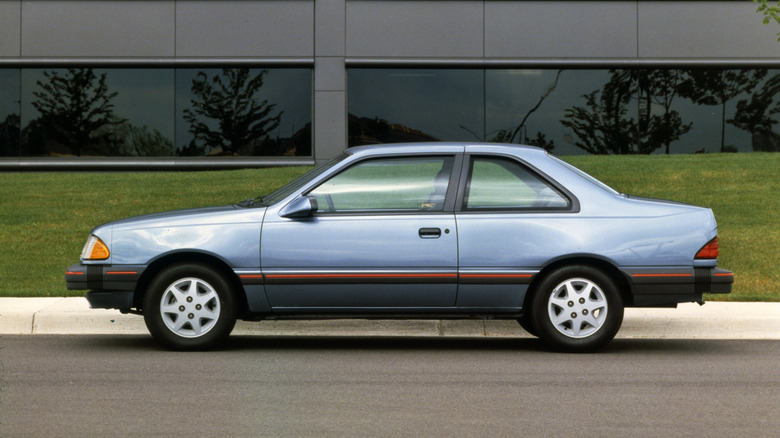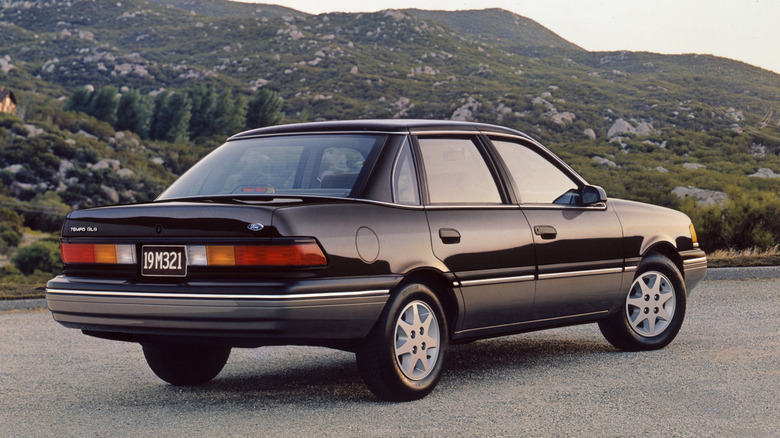Why Ford's Fuel Efficient 2.3-Liter Tempo Was Discontinued
In the late 1970s, the handwriting was on the wall that American automakers needed to focus on efficiency, reliability, and fresh styling to remain competitive, with Japanese imports increasingly gaining market share. Ford's process involved drafting a replacement for its malaise-era Fairmont line of compact cars. Its greatest claim to fame was ushering in the iconic Fox body platform underpinning the Mustang for approximately 15 years. But we digress.
When Ford's new compact, the Tempo, was unveiled for the 1984 model year — on the deck of the decommissioned aircraft carrier Intrepid, no less — it was indeed fresh looking with aerodynamic body lines, a smaller overall footprint, and a transition to front-wheel drive that maximized cabin and trunk space. Even though the Tempo's 2.3-liter four-cylinder engine shared its displacement with the ubiquitous 2.3-liter Lima engine that powered the Pinto, base Mustang, and many other Ford vehicles, the two were completely unrelated. The Tempo's new High Swirl Combustion (HSC) engine, which also powered the new Taurus, was typically rated between 90 and 100 horsepower depending on year and trim level.
The Tempo was available as a coupe and sedan and had a corporate twin in the slightly more upscale Mercury Topaz. Over the years, a diesel engine from Mazda was offered, as was a more powerful six-cylinder engine, and an all-wheel drive system.
The Tempo sold like crazy — at first
In its inaugural year of production, an incredible 531,468 vehicles were sold between the Tempo and Topaz combined. By the early '90s and now in its second generation, the compact Ford struggled to garner even half the sales from its earlier years.
But what caused such a significant decline in sales? As the '90s went on, the car market started to change with consumers shifting toward buying larger vehicles, and as a result, Ford decided to discontinue the Topaz and the Tempo models. Besides changing consumer sentiment, Ford was also ready to cease production of the Tempo's most popular powerplant, the 2.3-liter HSC, which would necessitate a total redesign of the platform that, frankly, was probably overdue anyway.
Instead, the brand chose to pursue its "world car" vision by importing a version of the European Ford Mondeo, rebranded as the Ford Contour for the American market. Much to the chagrin of buyers, the Contour's price was $1,000 more than the outgoing Tempo.
In May 1994, the final models rolled off Ford's Kansas City, Missouri, assembly line. Although the Tempo wasn't particularly memorable in any one area, it was a well-rounded and affordable vehicle that suited Americans' needs at the time. Hardcore gearheads may not have fond recollections of Ford's revolutionary compact. Still, it was undoubtedly an overall win for Ford — like the much-maligned K-car was to Chrysler in the same era.

